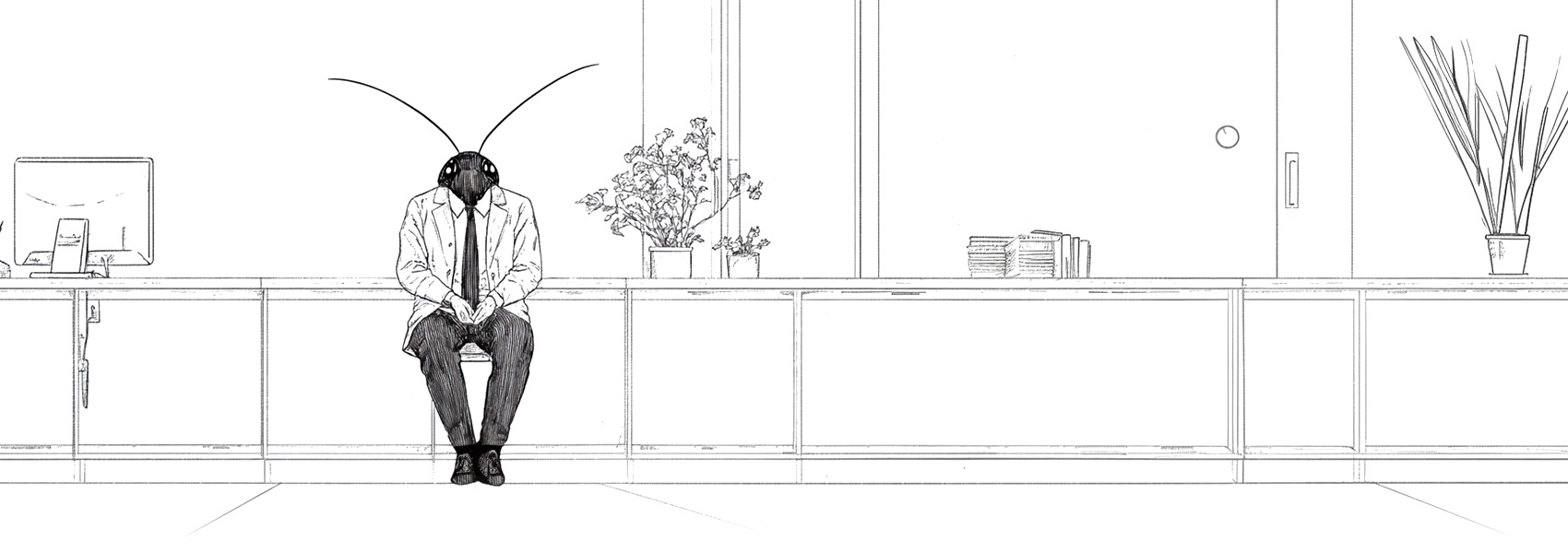
Franz Kafka’s The Metamorphosis (1915) is a landmark of existential literature, a surreal and haunting novella that explores themes of alienation, identity, and the absurdity of human existence. The story of Gregor Samsa, a traveling salesman who awakens one morning transformed into a monstrous insect, serves as a powerful allegory for the dehumanizing effects of modern society, familial duty, and self-worth. With its stark prose and psychological depth, Kafka’s masterpiece remains a cornerstone of 20th-century literature, offering timeless insights into isolation, guilt, and the fragility of human connection.
The novella opens with one of the most iconic lines in literature: “As Gregor Samsa awoke one morning from uneasy dreams, he found himself transformed in his bed into a gigantic insect.” Gregor, a dutiful son and breadwinner for his middle-class family, reacts to his metamorphosis not with horror but with practical concern—how will he get to work? His grotesque new body (described as a “monstrous vermin” or Ungeziefer in German) traps him in his room, yet his thoughts remain disturbingly human.
Kafka immediately juxtaposes the absurdity of Gregor’s physical state with the banality of his worries: overdue payments, his employer’s anger, and his family’s financial dependence. When Gregor’s manager arrives to chastise him for missing work, Gregor struggles to communicate through his insectile clicks, horrifying his family and employer. The manager flees, and Gregor’s father drives him back into his room with a stick, marking the first fracture in their relationship.
Gregor’s transformation forces his family—father, mother, and sister Grete—to confront their dependency on him. Before his metamorphosis, Gregor supported them entirely with his sales job, resentfully tolerating their passive exploitation. Now, unable to work, he becomes a burden.
Initially, Grete shows compassion, bringing him food and cleaning his room. However, as the family’s financial situation deteriorates, resentment festers. They take on menial jobs (father as a bank messenger, mother sewing clothes) and rent a room to three stern boarders. Gregor’s room, once a sanctuary, becomes a storage space for discarded furniture, mirroring his eroding humanity.
Grete undergoes her own metamorphosis, evolving from a fragile girl into the family’s pragmatic decision-maker. She stops referring to Gregor as “brother” and insists they must “get rid of it.” Her violin-playing, once a source of joy for Gregor, becomes a cruel reminder of his separation from humanity when the boarders demand a performance. Gregor, drawn by the music, creeps into the living room, horrifying the boarders, who refuse to pay rent and threaten legal action.
Gregor, now physically decaying and starved, retreats to his room. His family, relieved by his death, dismiss him as a “thing” and plan a hopeful future without him. The novella ends with the Samsas taking a tram ride into the countryside, their daughter Grete stretching her limbs—a symbol of rebirth at Gregor’s expense.
Gregor’s physical transformation externalizes his internal alienation. Long before becoming an insect, he felt trapped by his role as a provider, estranged from his own desires. His metamorphosis literalizes his sense of being a “bug” in the eyes of his family and employer. Kafka critiques capitalist societies that reduce individuals to their economic utility—Gregor is valued only as a worker, not as a human being.
Key Quote: “Was he an animal, that music could move him so?”
Kafka plunges readers into a world devoid of logic or reason. Gregor’s transformation is never explained, reflecting the absurdity of existence itself. The novella asks: How do we find meaning in a universe indifferent to suffering? Gregor’s struggle to reconcile his human mind with his insect body mirrors humanity’s futile search for purpose.
Gregor’s guilt drives the narrative. He blames himself for his family’s hardship, even as they exploit him. His father’s aggression, mother’s denial, and sister’s betrayal underscore the toxicity of codependency. Kafka, who struggled under his own domineering father, infuses the story with autobiographical resonance.
The Samsas’ revulsion toward Gregor mirrors society’s treatment of those deemed “other”—the disabled, the mentally ill, or the socially marginalized. The boarders’ disgust at Gregor’s appearance reflects xenophobic anxieties, while Grete’s insistence on disposing of him parallels eugenicist logic.
Written in Prague during the rise of industrialization and bureaucratic modernity, The Metamorphosis reflects Kafka’s disillusionment with oppressive systems—capitalism, patriarchy, and authoritarianism. As a Jewish writer in a German-speaking minority, Kafka understood marginalization intimately, infusing Gregor’s plight with themes of otherness.
Today, the novella resonates in discussions of:
Kafka’s genius lies in his ability to distill existential dread into a single, surreal image: a man transformed into a bug. The novella challenges readers to confront uncomfortable truths about identity, guilt, and the often transactional nature of love. Its open-ended absurdity invites endless interpretation, cementing its place as a seminal work of existentialist and modernist literature.
By blending visceral horror with philosophical depth, The Metamorphosis remains a mirror to our deepest fears—of irrelevance, abandonment, and the terrifying freedom of existing in a world without meaning. A must-read for fans of psychological horror, existential philosophy, and stories that dare to question what it means to be human.
